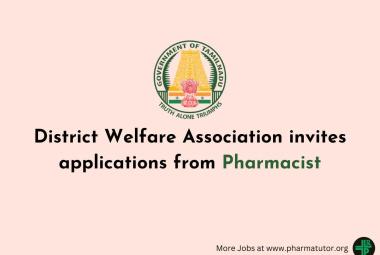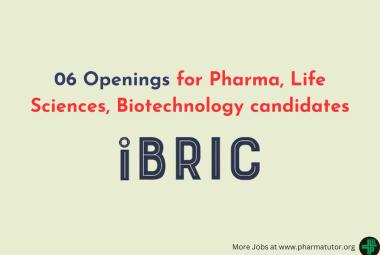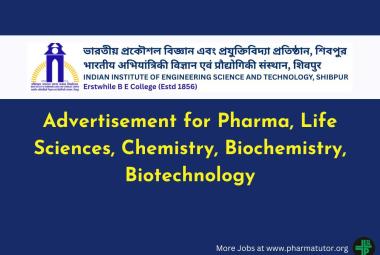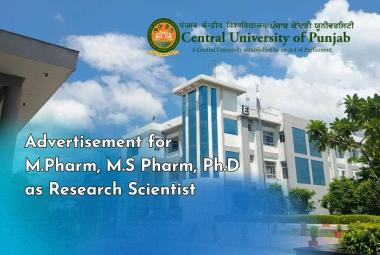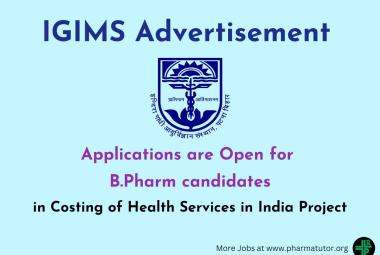{ DOWNLOAD AS PDF }
ABOUT AUTHORS:
Shweta Vashist*, Jyoti Kaushik, Batra K. Sunil
Department of Pharmaceutics,
Hindu College of Pharmacy, Sonipat
shwetavashist55@gmail.com
ABSTRACT:
Skin is the main target of topical and transdermal preparations. Major aim of transdermal drug delivery sytem is to cross the stratum corneum. Now-a-days we better know vesicles have importance in cellular communication. Niosomal carrier are systems containing soft vesicles, composed of non –ionic surfactant and an alternative to liposomes. They can entrap both hydrophilic and hydrophobic chemicals but these types of vesicles include the superior physical stability problems such as aggregation, fusion, and leakage of encapsulated drug. Proniosomes are provesicular approach which overcomes the limitations of vesicular system (Niosomes). Provesicular approach has been proposed to enhance the stability of vesicles. Proniosomes is a compact semi-solid liquid crystalline product of non- ionic surfactant easily formed on dissolving the surfactant in minimal amount of acceptable solvent and the least amount of aqueous phase. Proniosomes can be converted into niosomes in –situ by absorbing water from the skin.
[adsense:336x280:8701650588]
REFERENCE ID: PHARMATUTOR-ART-2350
|
PharmaTutor (Print-ISSN: 2394 - 6679; e-ISSN: 2347 - 7881) Volume 3, Issue 7 How to cite this article: S Vashist, J Kaushik, SK Batra; A Review Article: Proniosomes; PharmaTutor; 2015; 3(7); 25-30 |
INTRODUCTION:
The Transdermal route is widely used as it is convenient and safe and has greater advantage over conventional dosage form such as GI incompatibility, variable GI absorption, bypassing first pass metabolism, enhanced bioavalability, decreased frequency of administration, improved patient compliance. Non-ionic surfactant vesicles known as niosomes are microscopic lamellar structures formed on admixture of non-ionic surfactant, cholesterol and dicetyl phosphate with subsequent hydration in aqueous media[1]. During dispersion, both niosomes and liposomes are at high risk of aggregation, fusion and leakage of encapsulated drug. A promising product, called the proniosome, is a dry granular product that dissolves to form niosome suspension with addition of water. Proniosome have several advantages over niosomes, including the minimization of physical instability problems, such as aggregation, fusion and leakage or hydrolysis of encapsulated drug. In addition, it provides ease of transportation, distribution, storage and dosage[2]. Proniosome have shown equal or greater efficacy in drug release performance when compared with conventional niosomes. Typically proniosomes may contain various non-ionic surfactants like span 20, 40, 60, 80, and 85, tween 20, 40, 60, 80; lecithin, alcohol (ethanol, methanol, isopropyl alcohol) and chloroform. Most of surfactant used to make non-ionic surfactant vesicles have a low aqueous solubility. However, freely soluble non-ionic surfactants such as tween can form the micelles on hydration in presence of cholesterol[3].
a) Cholesterol concentration into proniosomal formulations could affect vesicle stability and permeability.
b) Formulation containing cholesterol increases the entrapment efficiency of drugs compared to formulation containing lecithin only.
c) The incorporation of lecithin into formulation requires special treatment during preparation and storage, which makes the product less stable and highly expensive.
[adsense:468x15:2204050025]
ADVANTAGES OF PRONIOSOMES:
1. Avoiding the problem of physical stability like fusion, aggregation, sedimentation and leakage on storage[4]
2. Avoiding hydrolysis of encapsulated drugs which limiting the shelf life of the dispersion[4]
3. Ease on storage and handling[5]
4. No difficulty in sterilization, transportation, distribution, storage uniformity of dose and scale up[5]
5. Drug delivery with improved bioavailability, reduced side effects[5].
6. Entrapment of both hydrophilic and hydrophobic drugs[6].
7. Shows controlled and sustained release of drugs due to depot formation[6].
8. Biodegradable, biocompatible and non immunogenic to the body[6].
9. Shape, size, composition, fluidity of niosomes drug can be controlled as and when required[6].
COMPONENTS OF PRONIOSOMES:
Surfactant:
Surfactants are the surface active agent usually organic compounds that are amphiphilic in nature. They have a variety of functions including acting as solubilizers, wetting agents, emulsifiers and permeability enhancers. The most common non-ionic surfactants used for vesicle formation are alkyl ethers, alkyl esters, alkyl amides and esters of fatty acids[7]. Selection of surfactant should be done on the basis of HLB value which is a good indicator of the vesicle forming ability of any surfactant. The formation of bilayer vesicles instead of micelles not only depends upon the HLB values of the surfactant but also on the chemical structure of component and the critical packing parameter. The HLB value of a surfactant plays a key role in controlling drug entrapment of the vesicle it forms. As Hydrophilic Lipophilic Balance is a good indicator of the vesicle forming ability of any surfactant, HLB number in between 4 and 8 was found to be compatible with vesicle formation[1].
Carrier:
The carrier when used in the proniosomes preparation permits the flexibility in the ratio of surfactant and other components that incorporated. In addition to this, it increases the surface area and hence efficient loading. The carriers should be safe and non-toxic, free flowing, poor solubility in the loaded mixture solution and good water solubility for ease of hydration[8,9]. Commonly used carriers are listed below:
a) Malodextrin.
b) Sorbitol.
c) Spray dried lactose.
d) Glucouse monohydrate.
e) Lactose monohydrate.
f) Sucrose stearate.
Solvent and Aqueous phase:
Alcohol used in proniosome has a great effect on vesicle size and drug permeation rate. Vesicles formed from different alcohols are of different size and they follow the order: Ethanol > Propanol > Butanol > Isopropanol. Phosphate buffer 7.4, 0.1% glycerol, hot water is used as aqueous phase in preparation of proniosomes[10].
Lecithin:
They are generally named depending on their source of origin such as soya lecithin from soya beans and egg lecithin from egg yolk[11]. Phosphatidyl choline is auch a major component of lecithin. In the vesicular system it plays a number of important role such as[12] :
a) It acts as permeation enhancers.
b) Prevents the leakage of drug.
c) Enhanced the percent drug entrapment due to high Tc (phase transition temperature)
Soya lecithin forms the vesicles of larger when comparedto egg lecithin whereas when we compared these two on the basis of the penetration capability soya lecithin is a better candidate to select as it contain unsaturated fatty acid, oleic and linoleic acid whereas the egg lecithin contain the saturated fatty acid[11].
Cholesterol:
Cholesterol is naturally occurring steroid used as membrane additive. Steroids are important components of cell membrane and their presence in membrane brings about significance changes with regard to bilayer stability, fluidity and permeability. It prevents aggregation by the inclusion of molecules that stabilize the system against the formation of aggregate by repulsive steric or electrostatic effects[11]. El-Laithy et al. Reported that as the cholesterol content increase there is a significant increase in entrapment efficiency (%) but after a certain limit further cholesterol increase result in significant decrease in entrapment efficiency. The increase in entrapment efficiency shows that the cholesterol, which acts as the “vesicular cement” in the molecular cavities of surfactant bilayer, and abolishes the gel to sol transition, thereby form less leak vesicles. Therefore, increase in the rigidity decrease the permeability of the entrapped drug and hence improves the entrapment efficiency. However, when cholesterol amount was increased after a certain limit , the opposite result occurred. The reason behind decreased entrapment efficiency may be due to the reason that a cholesterol molecule will compete with drug for the space within the bilayer, remove the drug from the bilayer and in addition to this will disrupt the vesicular membrane structure[13.14].
METHOD OF PREPARATION
Proniosome are prepared by three methods:
1) Slurry method.
2) slow spray coating method.
3) Coacervation phase separation method.
Slurry method:
Proniosomes can be prepared by addition of the carrier and the entire surfactant solution in a round bottomed flask which is fitted to rotary flash evaporator and vacuum was applied to form a dry and free flowing powder. Finally, the formulation should be stored in tightly closed container under refrigeration in light. The time required for proniosome production is independent of the ratio of surfactant solution to carrier material and appears to be stable. This method is advantageous because due to uniform coating on carrier it protects the active ingredients and surfactants from hydrolysis and oxidation. Along with that the higher surface area results in a thinner surfactant coating, which makes the rehydration process more efficient[15,16].
Slow spray coating method:
This method involves preparation of proniosomes by spraying surfactant in organic solvent onto the carrier and then evaporating the solvent. It is necessary to repeat the process until the desired surfactant loading has been achieved, because the carrier is soluble in the organic solvent. The surfactant coating on the carrier is very thin and hydration of this coating allows multilamellar vesicles to form as the carrier dissolves. The resulting niosomes have uniform size distribution similar to those produced by conventional methods. The main advantage of this method is to provide a means to formulate hydrophobic drugs in a lipid suspension with or without problem with instability of the suspension or susceptibility of active ingredient to hydrolysis. This method was reported to be tedious since the sorbitol carrier is soluble in the solvent used to deposit the surfactant. It is also found to interfere with the encapsulation of certain drugs[15,17].
Co-acervation phase separation method:
Proniosomal gels can be prepared by this method which comprises of surfactant, lipid and drug in a wide mouthed glass vial along with small amount of alcohol in it. The mixture is warmed over water bath at 60-70ºC for 5min until the surfactant mixture is dissolved completely. Then the aqueous phase is added to the above vial and warmed still a clear solution is formed which is then converted into proniosomal gel on cooling. After hydration of proniosomes they are converted to uniformly sized niosomes[16,17].

Figure: Preparation of proniosomes by coacervation phase separation method.
NOW YOU CAN ALSO PUBLISH YOUR ARTICLE ONLINE.
SUBMIT YOUR ARTICLE/PROJECT AT editor-in-chief@pharmatutor.org
Subscribe to Pharmatutor Alerts by Email
FIND OUT MORE ARTICLES AT OUR DATABASE
CHARACTERIZATION OF PRONIOSOMAL GEL
Determination of Proniosomal gel pH :
One gram each of the gel formulations and the reference was accurately weighed and dispersed in 10 ml of purified water. The pH of the dispersions was measured with a pH meter[18].
Homogenity:
All developed gels were tested for homogeneity by visual inspection after the gels have been set into the container. They were tested for their appearance and presence of any aggregates[19].
Spreadability:
It was determined by wooden block and glass slide apparatus. Weights of about 100 mg were added to the pan and the time was noted for upper slide (movable) to separate completely from the fixed slide[20].
Spreadability was then calculated by using the formula:
S=M.L/T
Where,
S= Spreadability
M= Weight tied to upper slide
L= Length of glass slide
T= Time taken to separate the slide completely from each other.
Determination of percentage entrapment efficiency:
Accurately weight 200mg of gel was dispersed in pH 7.4 phosphate buffer up to 10ml ultrasonicated for 10 minutes centrifuge at 20,000 rpm at room temperature for 30 minutes. The supernatant was taken and analyzed spectrophotometrically. The percentage of drug encapsulation was calculated by equation no.1
EE (%) = [(Ct-Cf)/Ct] ×100 --------------------Eq. (1)
Where, Ct is the concentration of total drug, Cf is the concentration of free drug[21].
Vesicle Size Analysis:
Particle size of different batches of Proniosomal gel was determined by optical microscope 100X magnification. Hydration of proniosomal gel (100 mg) is done by adding saline solution (0.9 Nacl solution) in a small glass vial with occasional shaking for 10 mins. The dispersion is observed under optical microscope. The size of 100 vesicles was measured using stage micrometer[22].
Vesicle Morphology:
Shape and surface morphology of proniosomes was studied using scanning electron microscopy (SEM). The Proniosomes were mounted on metal stubs and the stub was then coated with conductive gold with sputter coater attached to the instrument. The photographs were taken[23].
Extrudability study:
The formulations are filled in the collapsible tubes after the gels are set in the container. The extrudability of the formulation is determined in terms of weight in grams required to extrude a 0.5cm. ribbon of gel in 10 second[20].
In vitro diffusion studies :
In vitro diffusion studies of proniosomal gel was performed in Franz diffusion cell that has receptor compartment with an effective volume approximately 60 ml and an effective surface area of permeation of 3.14 sq cms. The egg membrane or cellulose membrane was mounted between the donor and receptor compartment. A weighed amount of Proniosomal gel is placed on one side of the skin the receptor medium was phosphate saline buffer pH 7.4. The receptor compartment surrounded by a water jacket to maintain the temperature at 37±0.5ºC. Heat is provided using a thermostatic hot plate with a magnetic stirrer. The receptor fluid is stirrer by a Teflon coated magnetic bead fitted to a magnetic stirrer. At each sampling interval, sample is withdrawn and is replaced by equal volume of fresh receptor fluid on each occasion. Samples withdrawn were analyzed spectrophotometrically[24].
Stability studies:
The stability studies were conducted according to ICH guidelines. The stability of vesicles to retain the drug was assessed by keeping the proniosomal gel at three different temperature conditions like refrigeration temperature (4-80ºC), room temperature (25±20ºC) in aluminum foil sealed glass vials. The samples were withdrawn at different time intervals over a period of one month and they were observed visually and under optical microscope for the change in consistency and appearance of drug crystals upon storage point and drug leakage from the formulations by analyzing drug content[25].
CONCLUSION
Proniosomes are far better than other vesicles approaches. Proniosomes avoiding the problem of physical stability like fusion, aggregation, sedimentation and leakage on storage, Avoiding hydrolysis of encapsulated drugs which limiting the shelf life of the dispersion, Drug delivery with improved bioavailability, reduced side effectsand Entrapment of both hydrophilic and hydrophobic drugs. It can be easily prepared by three methods:- Spray method, Slow coating method and Coacervation phase seperation method.
REFERANCES
1. Prajapati SK, Kumar S; Proniosomal gel of Flurbiprofen:Formulation and Evaluation; Journal of drug delivery and therapeutics; 2012, 2(1); 1-5.
2. Trupti anil udasi, vikran p.wankhade; proniosome: a novel approach to secular drug delivery system; Int j pharm pharm sci res; 2013; 3(1); 1-6.
3. Yoshiko T, Stemberg B, Florence AT.; preparation and properties of vesicles (niosomes) of sorbitan monoesters (span 20, 40, 60, and 80) and sorbitan trimester (span 85); Int j pharm. 1994; 105(1); 1-6.
4. ND Shukla, M Tiwari; Proniosomal Drug Delivery System– Clinical Applications.; Intenational Journal of Research in Pharmaceutical and Biomedical Sciences; 2011; 2 (3); 880-887.
5. D Akhilesh, G Hazel, JV Kamath; Proniosomes – A Propitious Provesicular Drug Carrier, Int. J. Pharm PharmSci Res 2011; 1 (3): 98-103.
6. AK Jha, R Kumar, S Kumar, SS Jha. Vesicular System -Carrier for Drug Delivery. Der Pharmacia Sinica 2011; 2(4); 192-202.
7. PK Gannu, R Pogaku;. Nonionic surfactant vesicular systems for effective drug delivery - an overview; Acta Pharmaceutica Sinica B 2011; 1(4); 208-219.
8. D Akhilesh, G Faishal, JV Kamath; Comparative Study of Carriers used in Proniosomes; Int.J Pharm Chem Sci 2012; 1(1); 164-173.
9. N Pandey.; Proniosomes and Ethosomes: New Prospect in Transdermal and Dermal Drug Delivery System; IJPSR 2011; 2(8); 1988-1996.
10. K Yadav, D Yadav, K Saroha, S Nanda, P Mathur; Proniosomal Gel: A provesicular approach for transdermal drug delivery; Der Pharmacia Lettre 2010, 2(4); 189-198.
11. Ashwani singh rawat, proniosome gel: anovel topical delivery system. Int j recent advances in pharm. Res: july 2011;3 1-10.
12. El-Laithy HM, Shoukry O, Mahran LG. Novel sugar esters proniosomes for transdermal delivery of vinpocetine: Preclinical and clinical studies. Eur J Pharm Biopharm., 2011; (1); 43-55.
13. Litha Thomas, vidya viswanad, formulaton and optimizationof clotrimazole-loaded proniosomal gel using 32 factorial design, sci pharm. Sep 2012; 80(3); 731-748.
14. wikipedia.org/wiki/Cholesterol.
15. JR Walve, BR Rane, NA Gujrathi, SR Bakaliwal, SP Pawar. Proniosomes: A Surrogated Carrier for Improved Transdermal Drug Delivery System, IJRAP 2011; 2 (3); 743 -750.
16. D Akhilesh, G Hazel, JV Kamath. Proniosomes – A Propitious Provesicular Drug Carrier, Int. J. Pharm PharmSciRes 2011; 1 (3): 98-103.
17. R Jukanti, D Annakula, MR Errabelli, S Bandari; Provesicular drug delivery systems: An overview and appraisal. Arch. Appl.Sci.Res. 2010; 2(4); 135-146.
18. Trottet L, Merly C, Mirza M, Davis AF; Effect of finite doses of propylene glycol on enhancement of in vitro percutaneous permeation of loperamide hydrochloride. Int j pharm. 2004; 2(4); 213-219.
19. Jain s, scarpe r, umamaheswari rb and jain nk; Pro-tranferosomes for effective transdermal delivery of norgesterel. Preparation and invitro characterization; Int j pharm sci. 2003; 65(2); 152-60.
20. Kamal saroha, sarabjeet singh, transdermal gels- an alternative vehicles for drug delivery. Int j pharm. Chem. Bio sci.; 2013, 3(3); 495-503.
21. Walve JR, bakliwal SR, Rane BR, Design; development and evaluation of a proniosomal transdermal drug delivery system for diclofenac; Int journal of pharm. Invention.
22. Shamsheer ahmad s, sabareesh m; formulation and evaluation of lisinopril dehydrate transdermal proniosomal gels; 2011; 01(08); 181-185.
23. Hu c and Rhodes dg. Proniosomes: a novel drug carrier preparation. Int j pharm. 2000: 206(1), 110-22.
24. Richard W. Korsmeyer, Robert Gurnya, Eric Doelkera, Pierre Buria, Nikolaos A. Peppas; Mechanism of solute release from porous hydrophilic polymers. International Journal of Pharmaceutics. 1983; 15(1): 25-35.
25. circ.ahajournals.org/content/112/16/2436.full.pdf on line accessed on 15/08/2010.
NOW YOU CAN ALSO PUBLISH YOUR ARTICLE ONLINE.
SUBMIT YOUR ARTICLE/PROJECT AT editor-in-chief@pharmatutor.org
Subscribe to Pharmatutor Alerts by Email
FIND OUT MORE ARTICLES AT OUR DATABASE



